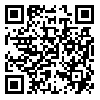Volume 18, Issue 3 (5-2018)
Modares Mechanical Engineering 2018, 18(3): 380-388 |
Back to browse issues page
1- Department of Mechanical Engineering, Amirkabir University of Technology, Tehran, Iran
2- Vehicle Research Technology Institute, Amirkabir University of Technology
2- Vehicle Research Technology Institute, Amirkabir University of Technology
Abstract: (6422 Views)
The fixtures play a significant role in harnessing the metal sheets in the assembly stage. The high flexibility of the metal sheets and the initial deviation in the pressed sheets cause deviation in the final product. Using the optimal layout of the clamping points in the fixture can reduce the deviation effectively and raising the final product quality. On the other hand, the cost of construction is intensively influence by the number of clamps, rising the number of clamps causes the cost of construction to increase and reducing it cause the deviation in the final product to increase. Therefore, the number of clamps should be considered in the optimal design of the fixture. It is challenging to achieve optimal design for fixture due to the difficulty in predicting sheet behavior and computational constraints. In this paper the relationship between the initial deviation of sheet and the deviation of final product is investigated and a method is proposed by using ant colony algorithm and finite element method for optimizing the position of the clamping points to reducing the deviation of the product after assembly with considering the minimizing the number of clamping points. Finally the proposed method is applied to a simple square sheet with initial deviation and based on the cost function, the number of clamping points and their position are optimized. The results show that reducing the amount of sheet deviation in the fixture causes reduce the deviation of final product.
Article Type: Research Article |
Subject:
design, tribology
Received: 2017/11/7 | Accepted: 2018/02/8 | Published: 2018/03/10
Received: 2017/11/7 | Accepted: 2018/02/8 | Published: 2018/03/10
| Rights and permissions | |
 |
This work is licensed under a Creative Commons Attribution-NonCommercial 4.0 International License. |


